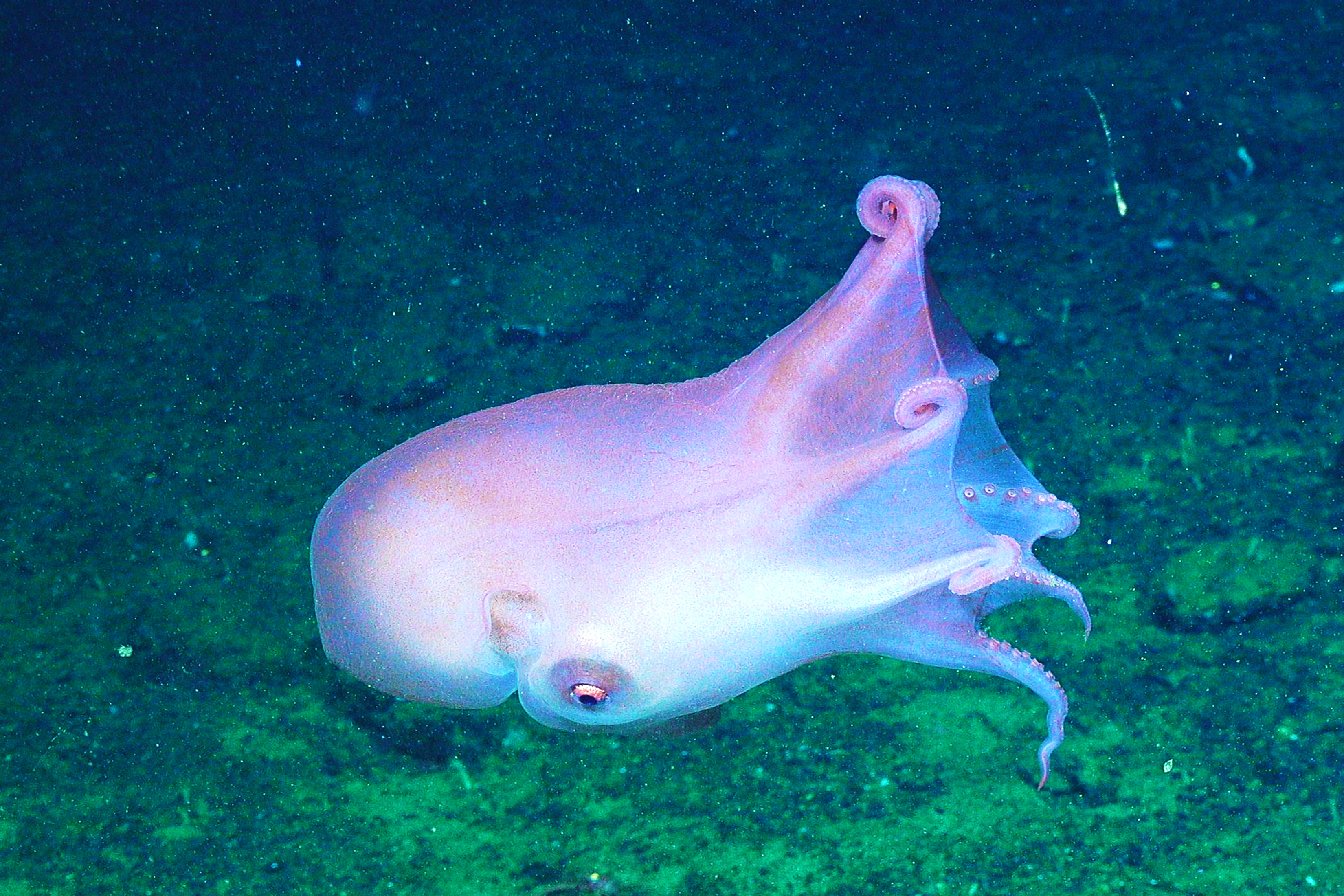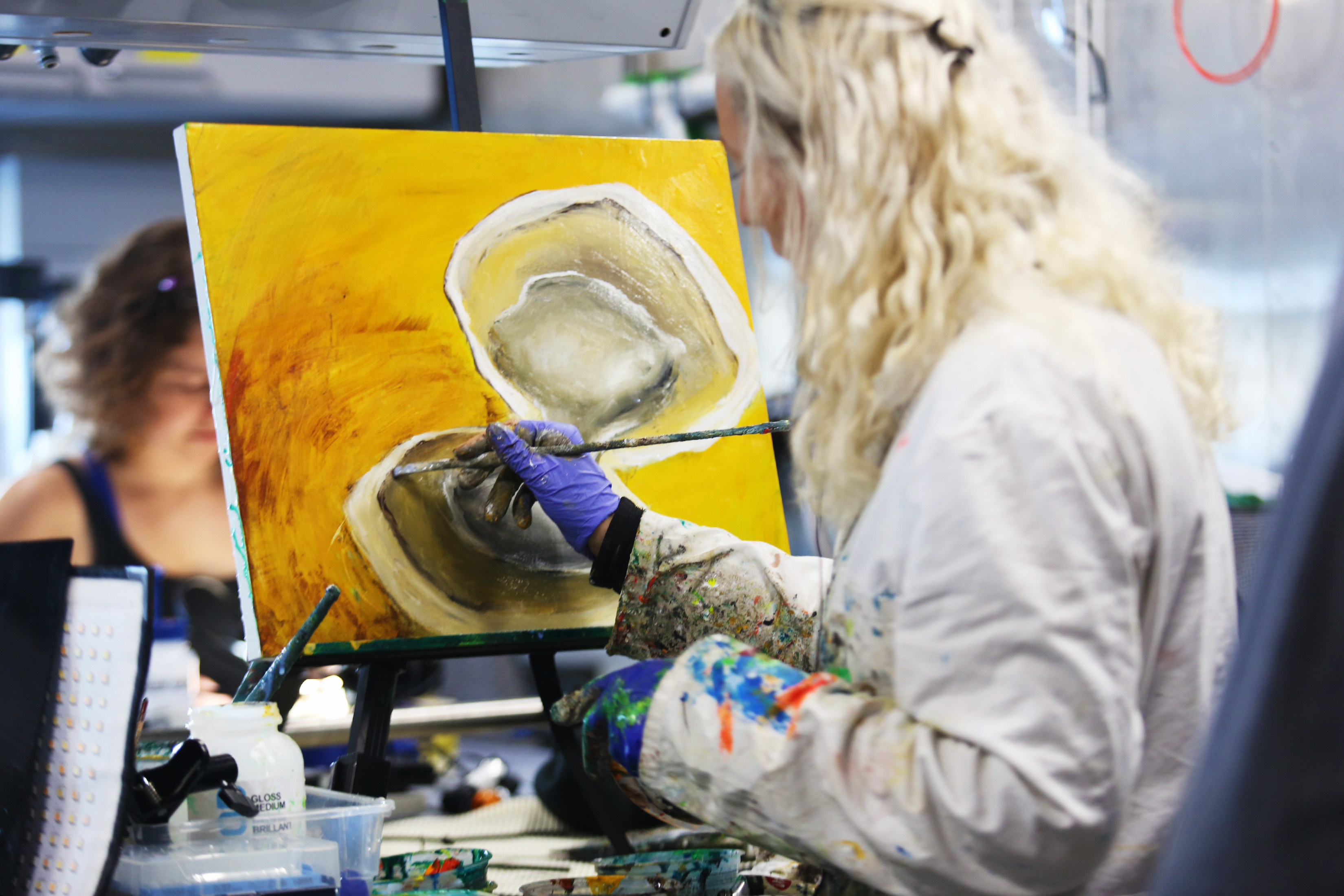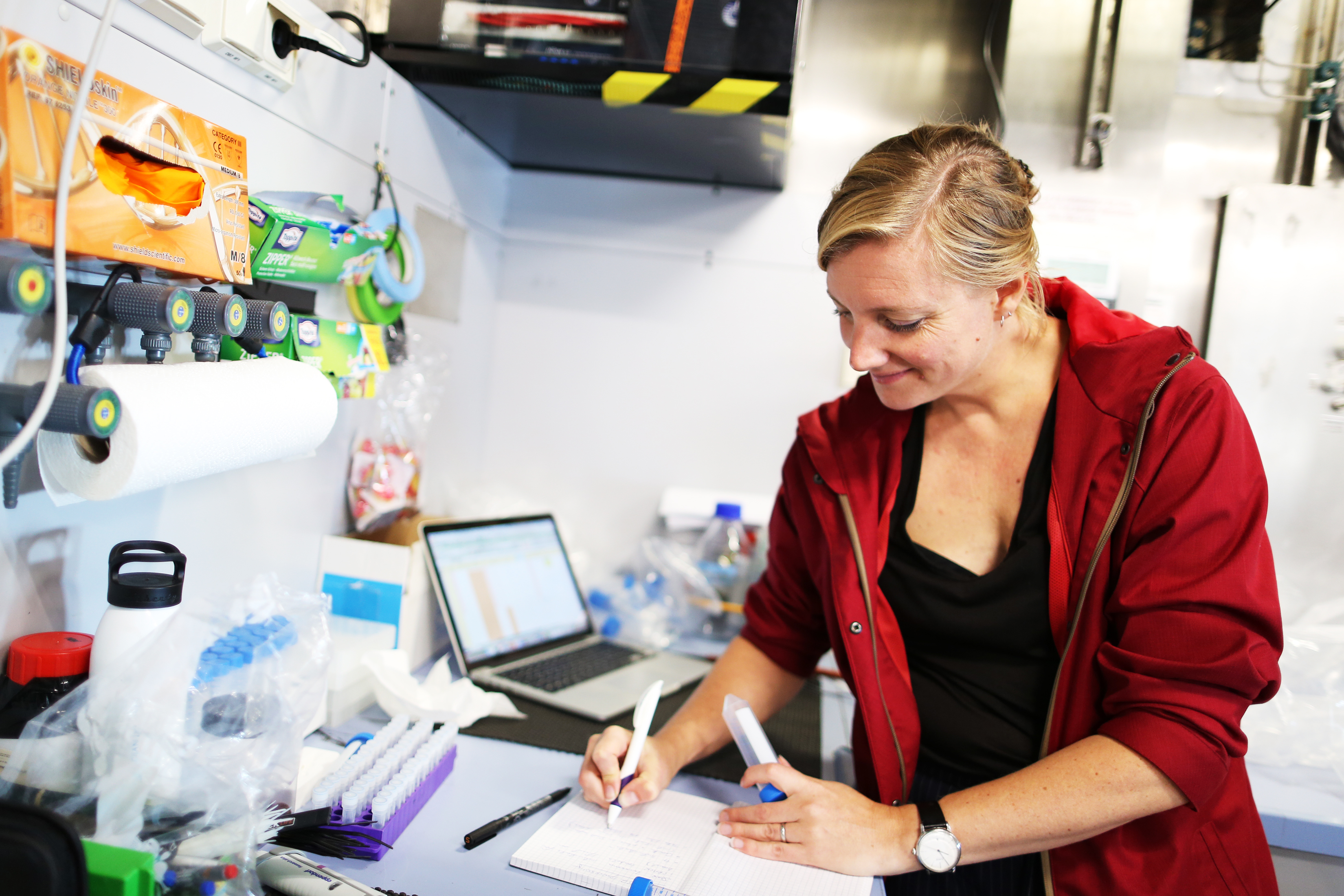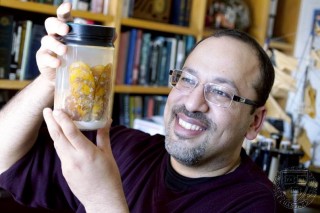For three weeks, the crew and science complement of the R/V Falkor has sailed down the coast of California, from San Francisco to San Diego. We have worked together to take the ROV SuBastian into the depths, beyond the reach of sunlight and—for now anyway—human intervention.
During our three-week journey, we have collected over 300 samples for the Scripps Institute of Oceanography and Harvard University. We have completed 17 dives, spending nearly 200 hours on the ocean floor. We have seen rare species like the seven-legged octopus Haliphron (the fourth time ever that this unique species has been seen alive.) We have almost certainly collected new species and have furthered our understanding of how seep communities function in the cold, dark waters of the deep. We have encountered many surprises, including another submarine! Finally – but by no means the least of our accomplishments – we dove on four sites that (to my knowledge) have never before been visited by humankind.

Quests and Colleagues
This expedition started out as little more than an idea, and a nascent one at that. We aimed to find out if naturally occurring methane seeps are close enough to one another that the animals and microbes that live there are able to move between these seafloor “neighborhoods” with ease. Do the animals that live at in the deep seeps (roughly 2,000 feet down) off Malibu, CA have offspring that live at the seeps off Santa Monica, CA? In that same vein, are they connected to the seeps off San Diego and beyond? Equally important: what are the broader environmental implications of these seeps? Are they influenced by climate change? Are they exacerbating global warming, or are they offsetting it? Finally, can we use these habitats to develop new tools for studying microbial life on other ocean worlds, such as the moons of Jupiter and Saturn? Those are the questions we brought with us to sea, and we are leaving now with answers to some of these questions (for example, there are many more seeps than we realized, and they seem very well connected), and many new questions as well.
The exploration of our natural world, however, neither starts nor ends with science. Exploration occurs along a continuum of human inquiry, including science, art, literature and poetry, and religion and spirituality. Our mission of scientific discovery and exploration has been made more whole by our shipboard colleagues and friends Lily Simonson (SOI Artist-at-Sea), Jennie Berglund (Harvard University Museum of Natural History), and Mary Lide Parker (SOI multimedia correspondent), who have beautifully captured our world through their lenses and paintbrushes. Each one of them has brought their enthusiasm and their own unique talents onboard, and have contributed as much to the science and exploration as any of the biologists and engineers.

Finally, I can speak for the entire science party when I say that our extraordinary expedition would not have been possible without the drive, talents, and patience of the R/V Falkor crew and the ROV SuBastian team. I have heard from many folks onboard that they choose to work on this vessel because they love the sense of purpose that science and engineering brings to an expedition. To them, we are so very grateful. The success of this expedition stems from their dedication and talent.
The Build
So now what? Is our mission complete? Will our discoveries be documented in our data and publications, read with zeal for a few years, then set aside for newer, fresher data? I doubt it. Science is built brick by brick, year by year. Our accomplishments here rest on the works of others, such as the scientists on the USS Albatross who sailed here over a century ago. Future scientists, in turn, will build on the foundations we are laying down. That is how we come to understand the world around us: through a continual act of discovery and investigation that inevitably links our past to the future.

I will leave you with a story, written by Issac Asimov who, as a young instructor, fell folly to one of the greatest misconceptions in science. He wrote:
A number of years ago, when I was a freshly-appointed instructor, I met, for the first time, a certain eminent historian of science. At the time I could only regard him with tolerant condescension…[as] he was compelled to shiver endlessly in the outskirts, getting only feeble warmth from the distant sun of science- in-progress; while I, just beginning my research, was bathed in the heady liquid heat up at the very center of the glow. In a lifetime of being wrong at many a point, I was never more wrong. I had fallen victim to the fallacy of the ‘growing edge;’ the belief that only the very frontier of scientific advance counted; that everything that had been left behind by that advance was faded and dead. There is not a discovery in science, however revolutionary, however sparkling with insight, that does not arise out of what went before. ‘If I have seen further than other men,’ said Isaac Newton, ‘it is because I have stood on the shoulders of giants.’
With that, I wish you fair seas and best wishes from the science party of the Backyard Deep expedition.

